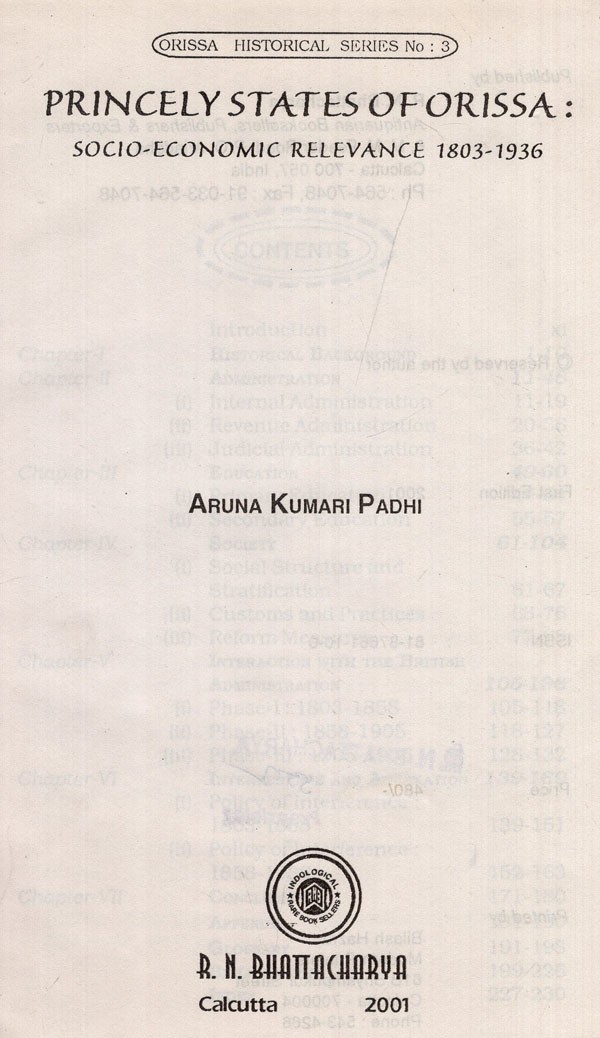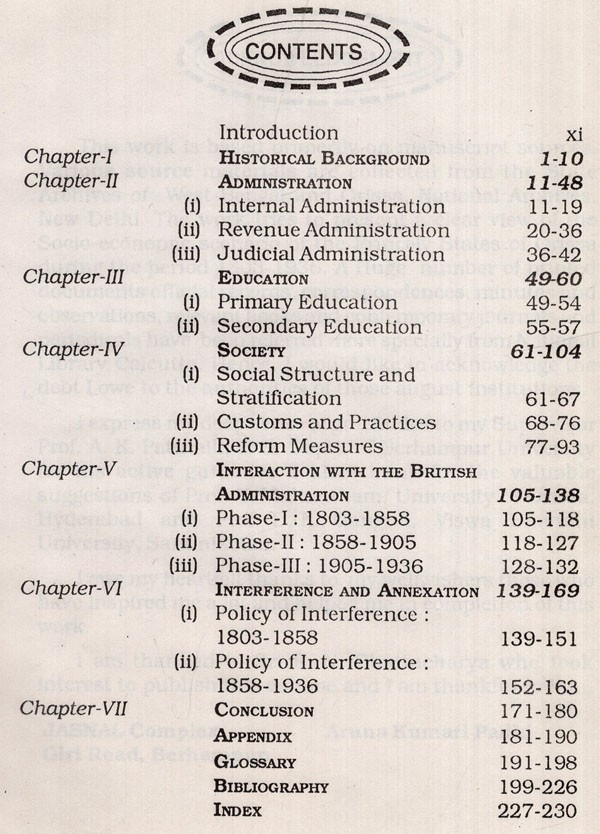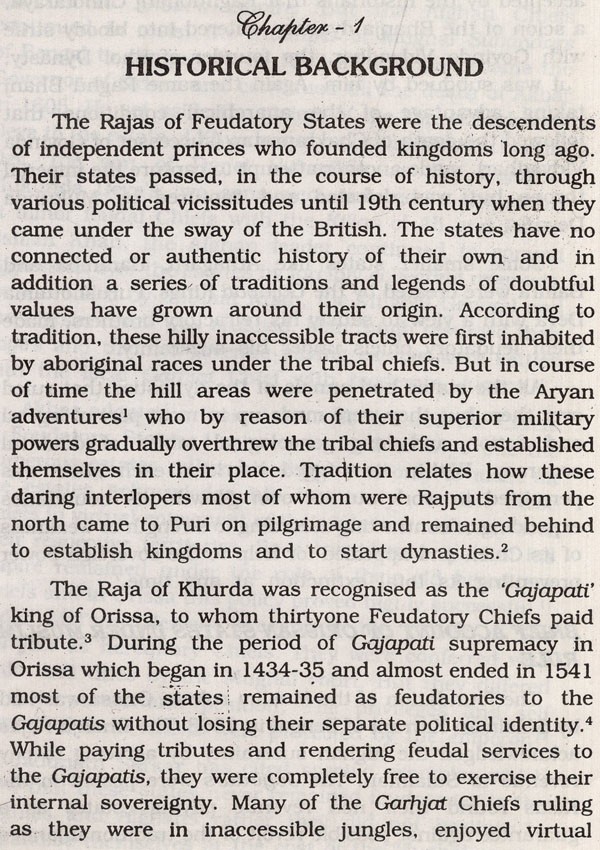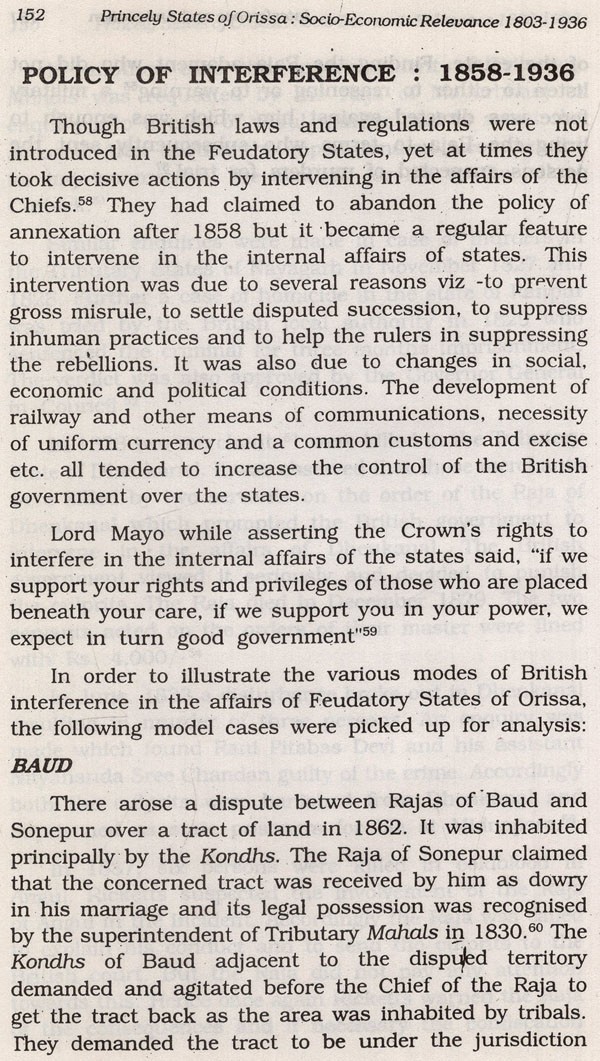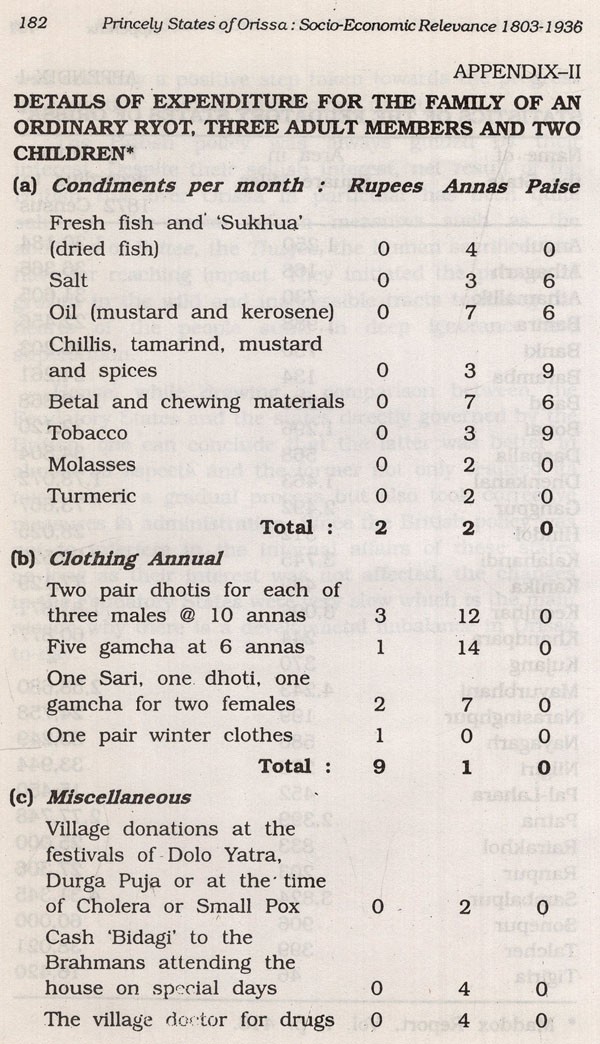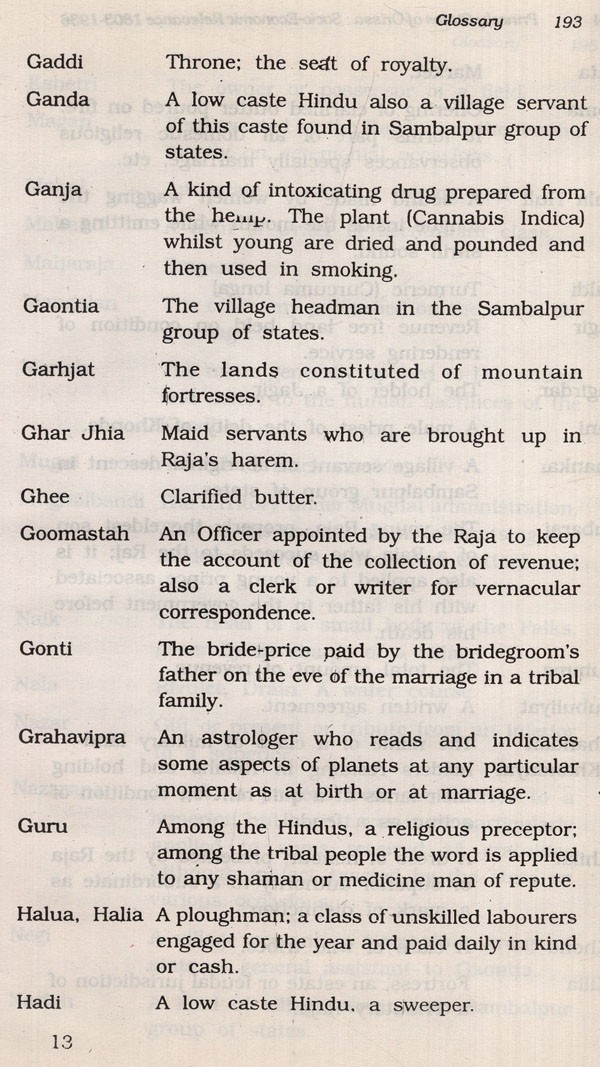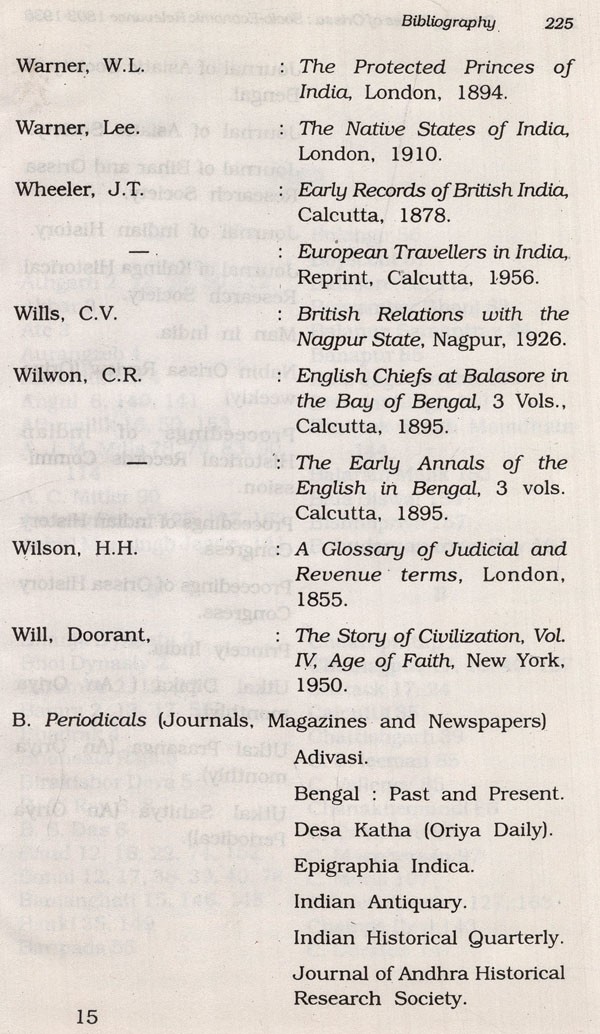
Princely States of Orissa: Socio Economic Relevence 1803-1936 (An Old and Rare Book)
Book Specification
| Item Code: | UAW457 |
| Author: | Aruna Kumar Padhi |
| Publisher: | R.N. Bhattacharya, Kolkata |
| Language: | English |
| Edition: | 2001 |
| ISBN: | 8187661100 |
| Pages: | 246 |
| Cover: | HARDCOVER |
| Other Details | 8.50 X 5.50 inch |
| Weight | 310 gm |
Book Description
This Historical research work has tried to interrogate on various aspects of Conclusions on princely States of Orissa presented by the scholars. It has touched upon less an political history and more on the impact of the imperial rule on the Socio-Economic system. A comparision in between British administered areas and princely States is made through sources which would help the future scholars for further studies.
Dr. Aruna Kumari Padhi is teaching history in Govt. Women's College, Berhampur. With her twenty years teaching experience and constant historical research, She is very near to students and researcher. She has contributed a number of research papers to historical journal and participated State and National level conference. At present she is working on 'Freedom Movement in Princely State of Orissa'.
During the pre-British days Orissa was divided into two groups of administrative regions. For the efficient revenue administration, Raja Todar Mal, the revenue minister of Akbar, made the first settlement which divided Orissa into Mughalbandi and Garhjats or Qillazats'. The area which remained under direct administrations of Mughals was called Mughalbandi and the area under the native Rajas who cendered submission and agreed to pay a fixed annual Peshkash was known as Garhjats. The Mughalbandi comprised the plain and fertile lands in the coastal region and the Garhjats comprised the hill regions. The Garhjat Chiefs were recognised as the Feudatories of the Imperial Mughals2. This system continued under the Marathas as well as the British.
Orissa proper was taken over by the British from the Marathas in 1803. The Feudatory Chiefs on their turn willingly executed agreement with the British binding themselves to maintain submission and loyalty to the East India Company and to pay an annual tribute. A considerable part of Orissa was placed under the direct executive authority of the British Government, while the Feudatory States were administered by the Chiefs who enjoyed a little independent administrative power. The part of Orissa placed under direct Administration was ruled according to the laws and regulations of the Company. The Feudatory States were not bound by the Company's rules and regulations and were governed by the prevailing indigenous Administrative system under the authority of the Tributary Chiefs. Thus different parts of Orissa were Placed under different forms of Administration.
**Contents and Sample Pages**
